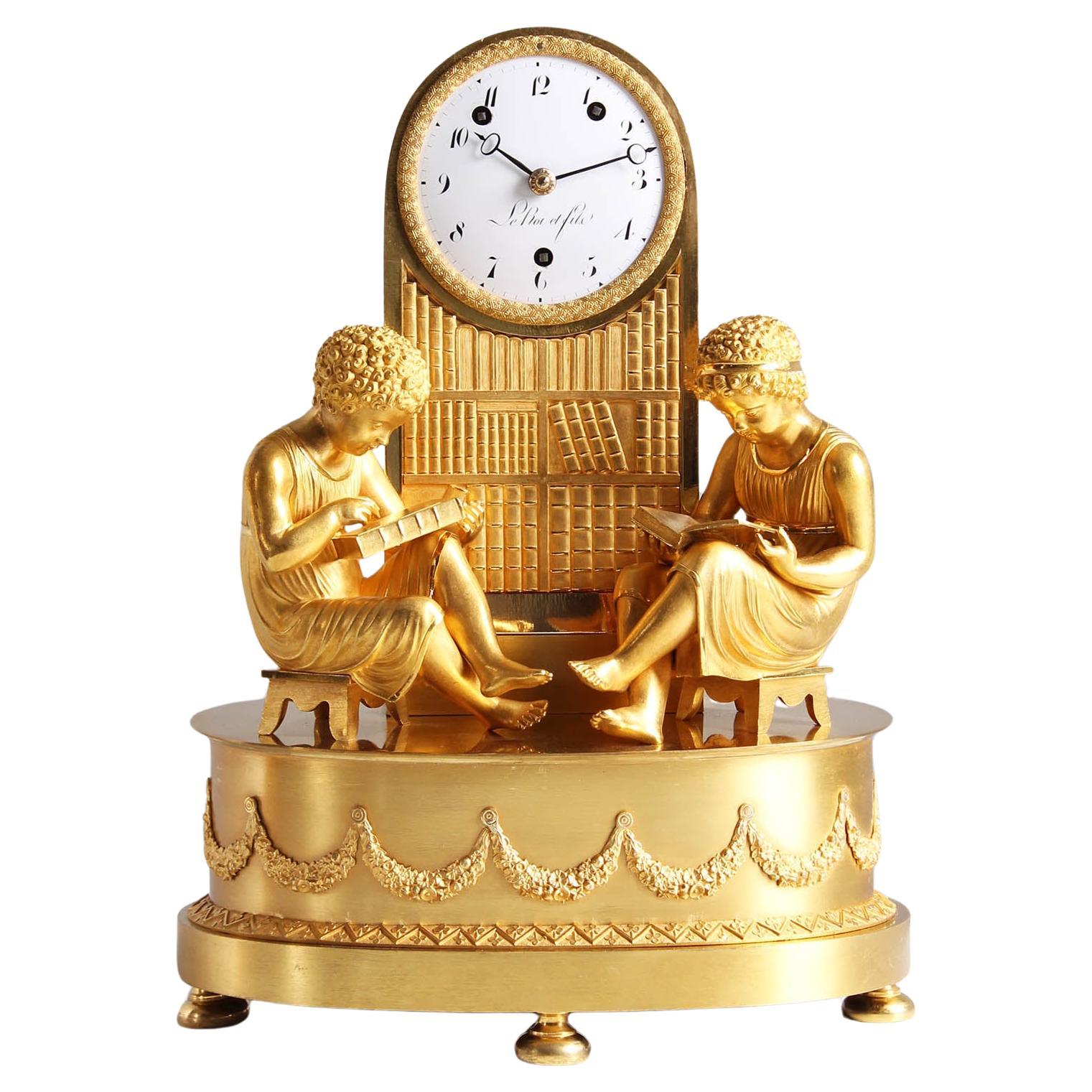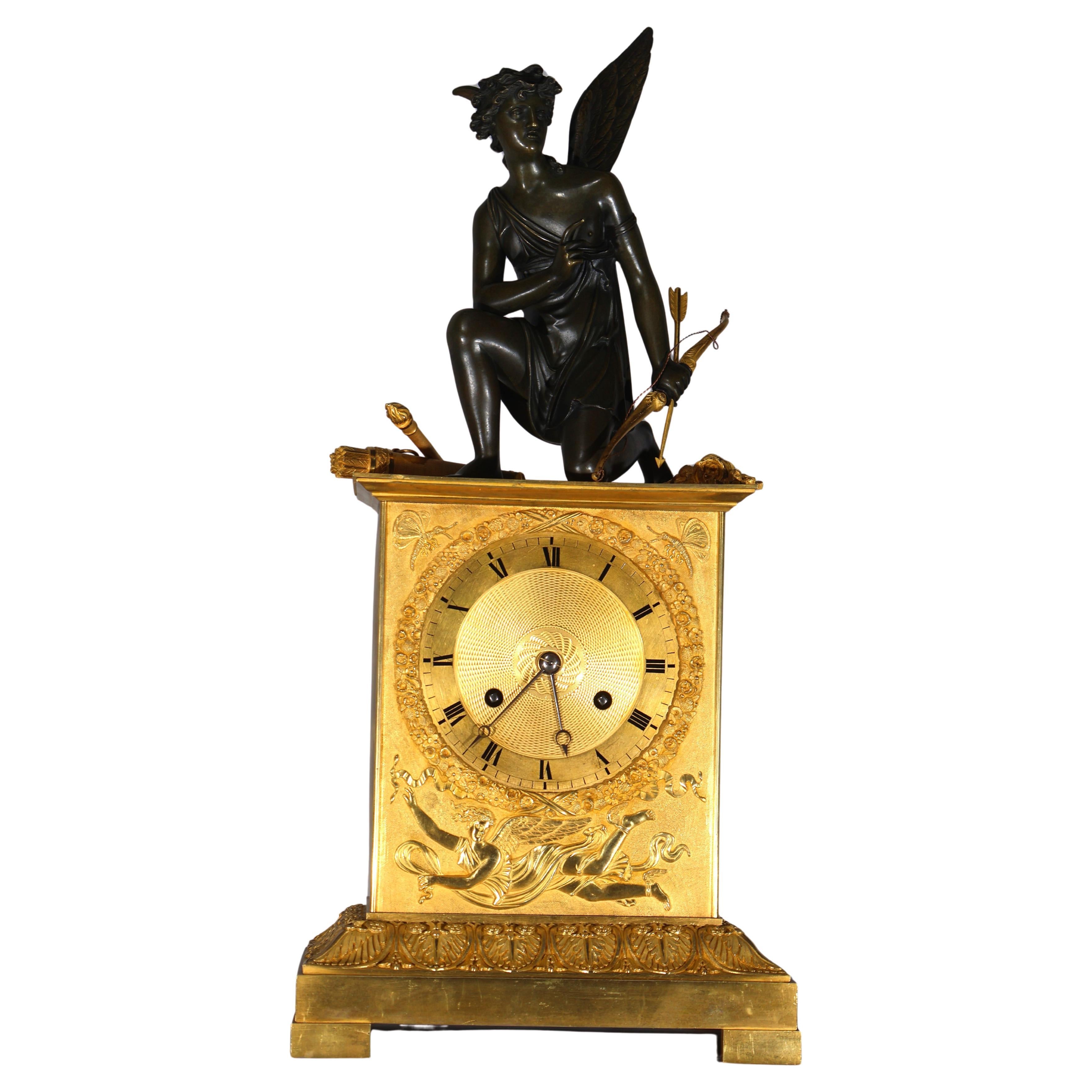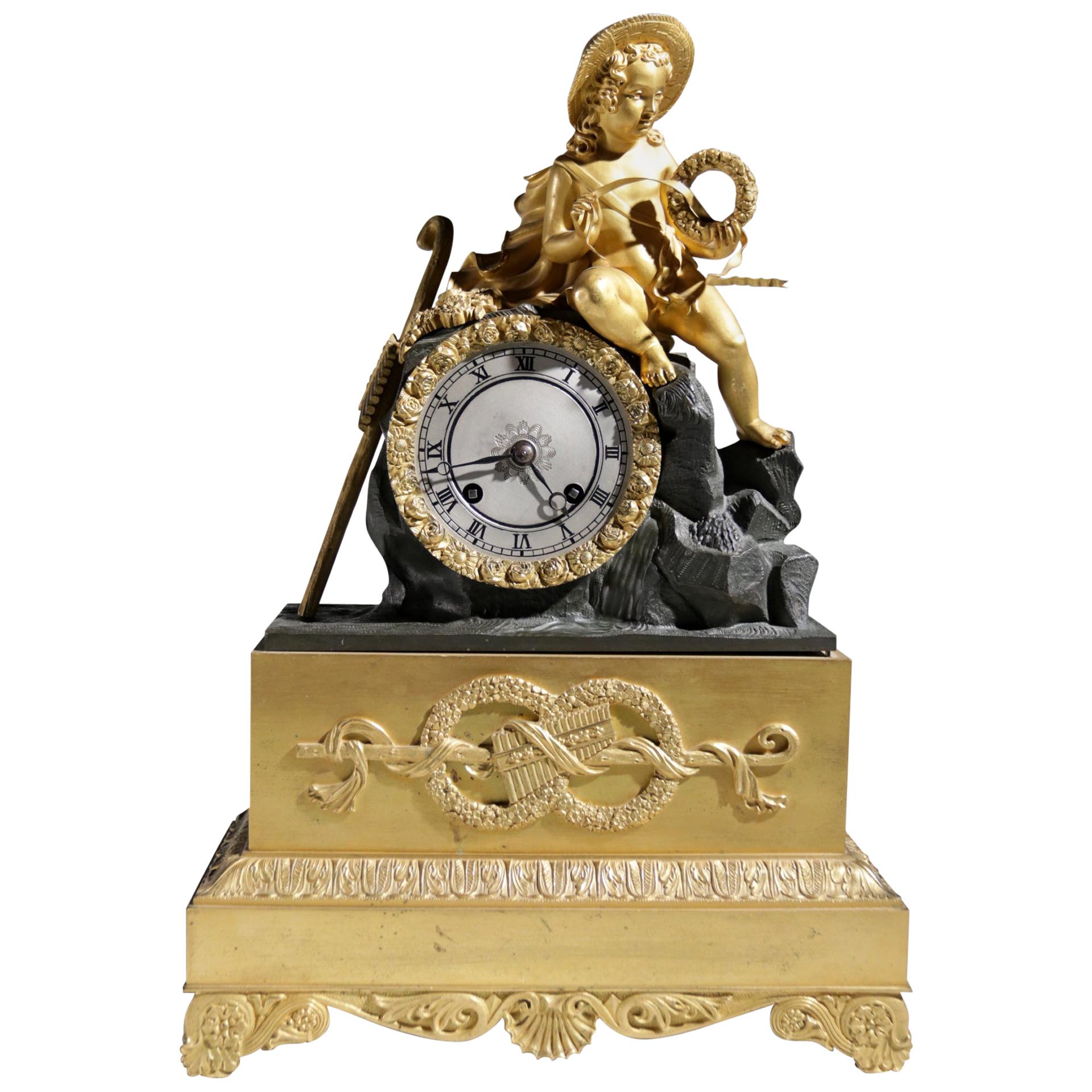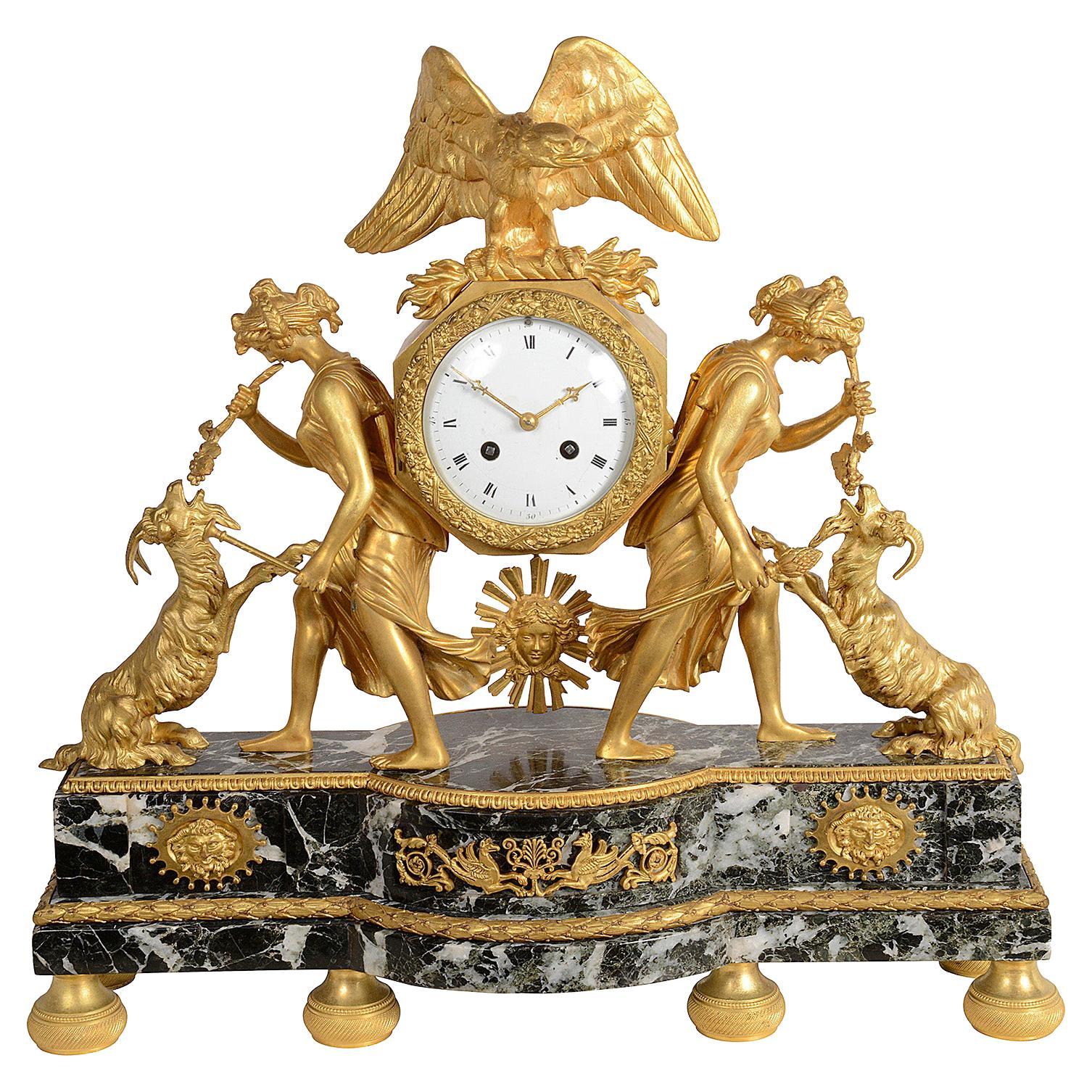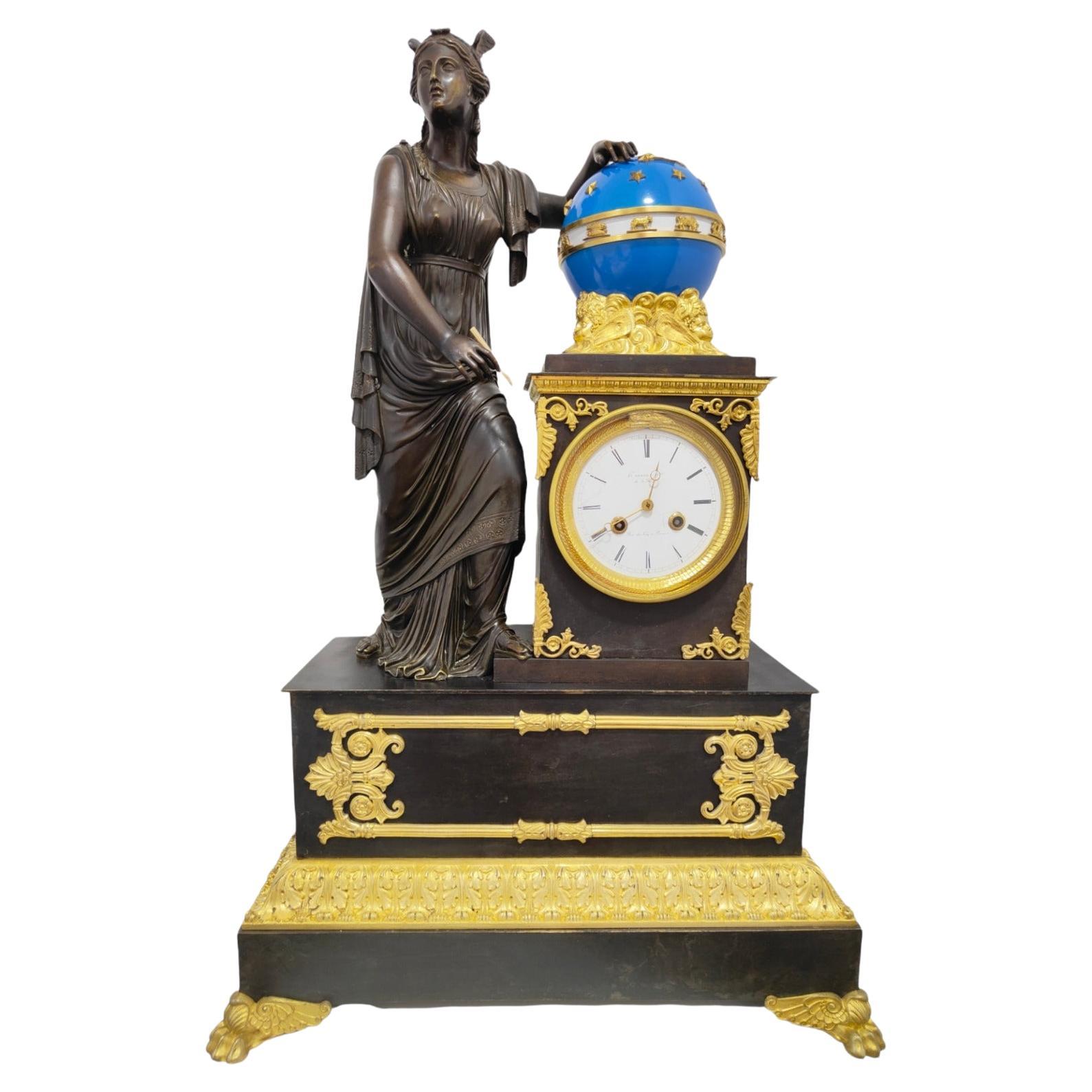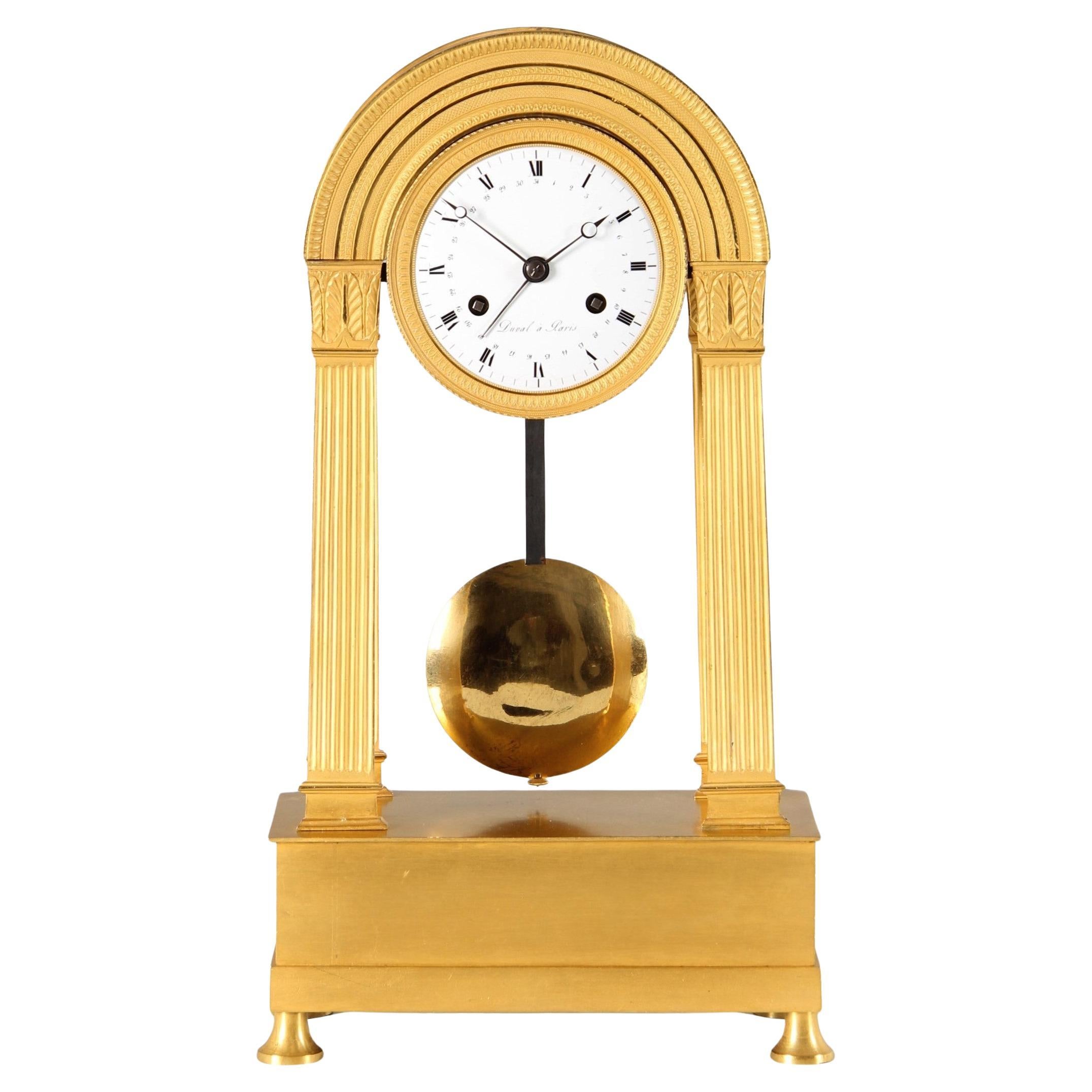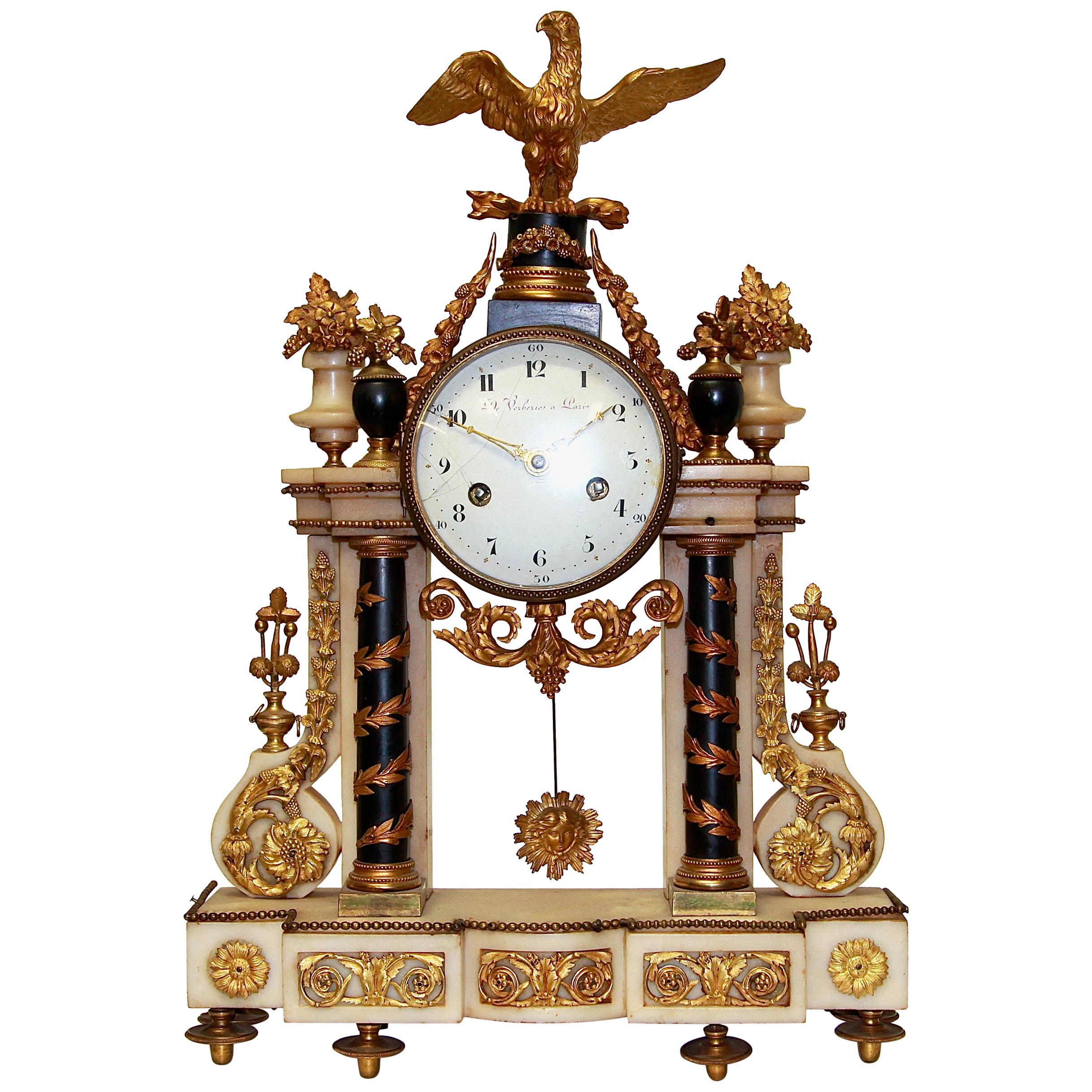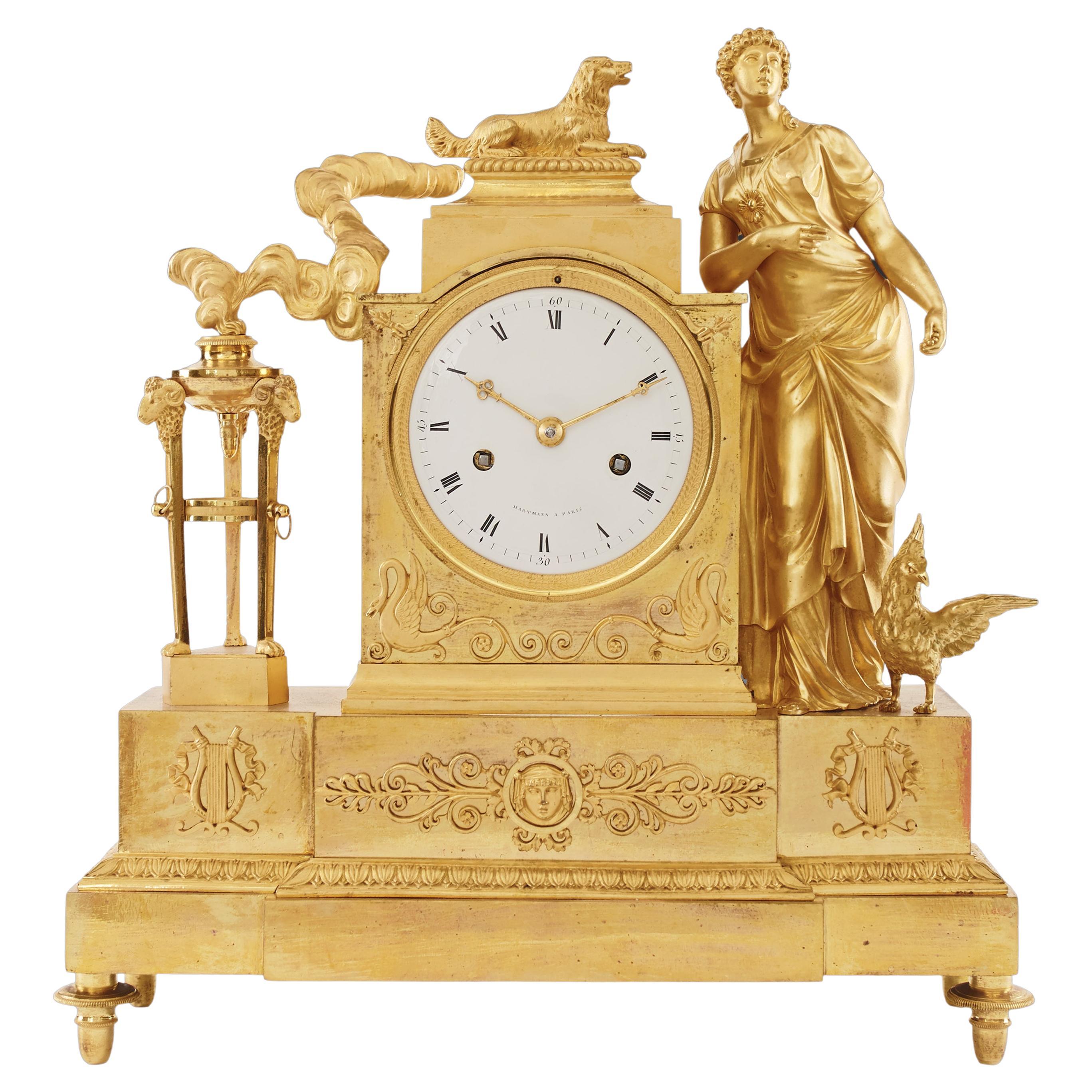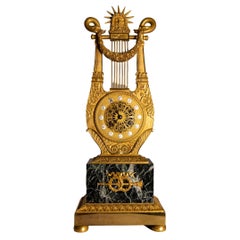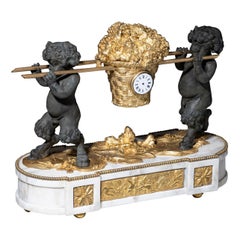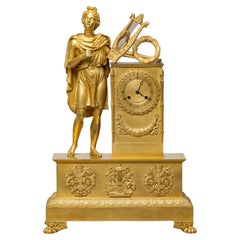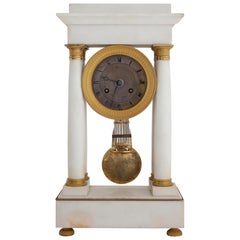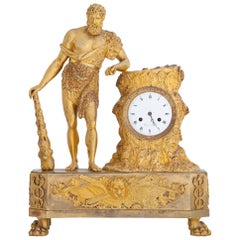
Empire Mantel Clock with Hercules, Paris. circa 1810
View Similar Items
Want more images or videos?
Request additional images or videos from the seller
1 of 16
Empire Mantel Clock with Hercules, Paris. circa 1810
About the Item
- Dimensions:Height: 19.69 in (50 cm)Width: 15.36 in (39 cm)Depth: 5.71 in (14.5 cm)
- Style:Empire (Of the Period)
- Materials and Techniques:
- Place of Origin:
- Period:
- Date of Manufacture:circa 1810
- Condition:Wear consistent with age and use.
- Seller Location:Greding, DE
- Reference Number:Seller: 063-01411stDibs: LU1014213713801
About the Seller
4.9
Gold Seller
Premium sellers maintaining a 4.3+ rating and 24-hour response times
Established in 1987
1stDibs seller since 2013
499 sales on 1stDibs
Typical response time: 13 hours
Authenticity Guarantee
In the unlikely event there’s an issue with an item’s authenticity, contact us within 1 year for a full refund. DetailsMoney-Back Guarantee
If your item is not as described, is damaged in transit, or does not arrive, contact us within 7 days for a full refund. Details24-Hour Cancellation
You have a 24-hour grace period in which to reconsider your purchase, with no questions asked.Vetted Professional Sellers
Our world-class sellers must adhere to strict standards for service and quality, maintaining the integrity of our listings.Price-Match Guarantee
If you find that a seller listed the same item for a lower price elsewhere, we’ll match it.Trusted Global Delivery
Our best-in-class carrier network provides specialized shipping options worldwide, including custom delivery.More From This Seller
View AllLouis Seize Lyre Mantel Clock, Probably Paris, circa 1780
Located in Greding, DE
Lyre-shaped mantel clock on marble base with crowning head of sun god Apollo and swan heads holding a flower festoon in their beaks. The dial is decorated with round enamel numerals....
Category
Antique 1780s French Louis XVI Table Clocks and Desk Clocks
Materials
Marble
Mantel Clock with small Satyrs, 1st Half 19th Century
Located in Greding, DE
Mantel clock on an oval marble base, adorned with fire-gilded bronze appliqués. The clock is supported by fully sculpted satyr figures carrying an overflowing gilded fruit basket. Em...
Category
Antique Early 19th Century French Empire Mantel Clocks
Materials
Marble, Bronze
Mantel Clock with Apollo, Early 19th Century
Located in Greding, DE
Large fire-gilded bronze pendulum clock on lion's paws with a rectangular pedestal featuring lyre and torch motifs. Above it rises the full-figure depiction of the god Apollo with a ...
Category
Antique Early 19th Century French Neoclassical Mantel Clocks
Materials
Bronze
Charles X Mantle Clock, Signed Jeannest, Paris, circa 1830
Located in Greding, DE
French pendule clock, the base, pedestal and columns are out of white marble. The silvered clockface with Roman numerals is inscribed Jeannest à Paris.
Category
Antique 1830s French Charles X Table Clocks and Desk Clocks
Materials
Marble, Silver
Mantel Clock with Genre Scene, Vienna 19th Century
Located in Greding, DE
Mantel clock in a gold-patinated wooden case with enameled clock face and octagonal pedestal with paw feet. The clock case rises above it in the shape of a wooden hut with a pointed ...
Category
Antique 19th Century Austrian Biedermeier Mantel Clocks
Materials
Wood
Mantel Clock with seated Benjamin Franklin, France, 20th century
Located in Greding, DE
Large bronze mantel clock with a gilded pedestal with rocaille decoration, cartouches with scrolls and books and an enamel dial with Roman nu...
Category
20th Century French Mantel Clocks
Materials
Bronze
You May Also Like
Empire Mantel Clock - La Bibliotheque, Ormolu, France, Paris, circa 1820
By Le Roi
Located in Greven, DE
Mantel Clock - La Bibliotheque - In the study room
Paris
fire-gilt bronze, enamel
Empire around 1820
Dimensions: H x W x D: 38 x 28 x 19 cm
Description:
Scenery mounted on an oval...
Category
Antique Early 19th Century French Empire Mantel Clocks
Materials
Bronze
Ormolu Mantel Clock, Belgium, circa 1810-1820
Located in Belmont, MA
Empire ormolu mantel clock, Belgium, circa 1810, Signed "J.B. Romaet a Gand". Decorated with a shepherd scene. Strikes the hour and half hour on a bell. With enamel clock face and si...
Category
Antique 1810s Belgian Empire Mantel Clocks
Materials
Ormolu
Empire Mantel Clock
Located in Atlanta, GA
An Exquisite Period Empire Clock, featuring Cupid (in patinated bronze) with his bow & arrow, next to him a quiver & torch. The body of the clock with bas relier decoration and anthe...
Category
Antique Early 1800s European Empire Mantel Clocks
Materials
Bronze
$6,250
French Empire Ormulu Bronze Mantel Clock, Lepaute, Thomire, Paris, circa 1815
Located in Greven, DE
Ormulu pendule with depiction of friendship and love
Paris (Lepaute, Thomire)
fire-gilt bronze
Empire around 1815
Dimensions: H x W x D: 44 x 36 x 13 cm
French pendulum movement with eight days duration. Thread suspension and lock disc striking movement with strike on bell on the half and full hour.
White enamel dial with Roman hour numerals and Breguet hands.
Signature: LePaute & Fils / Hrl. du Roi (Pierre-Basile Lepaute (1750 - 1843) with his son Pierre-Michel Lepaute (1785-1849); from 1811 in joint workshop).
Description:
The extremely high quality pendulum shown here takes up a profound theme: Friendship, which combines with love and can thereby outlast time and death. As it is typical for the epoch of classicism, personifications and symbols are taken from the fund of ancient mythology and art and then developed further.
The main figure is a young woman in an antique, girded garment, standing barefoot and with crossed legs next to an altar, on which she is leaning with her left elbow. She gracefully bows her head towards a tempestuously approaching Cupid, grasps his right hand with her left and draws him to her bosom, the seat of the heart. The delicate ambivalence of flying towards and being held culminates in the trustingly intimate look that the two cast at each other.
The young woman personifies friendship, the winged Cupid love. As a sign of their intimate connection, two burning hearts appear on the altar next to the two, framed by the puffed scarf, which are closely bound together by a chain of flowers.
Next to them, on the altar slab, one can see an erected book with the title "Amitie" (French: amitie, friendship). Supporting the book is a pomegranate held by a ring of pomegranate flowers. The bursting seeds spill out of the cracked skin. Since ancient times, the pomegranate and its blossoms have been dedicated to the goddess Persephone, symbolizing the underworld and death, but also life and fertility. The myrtle interwoven in the pomegranate flower wreath of "friendship" also has a far-reaching symbolic power: the plant was dedicated to the goddess Aphrodite, stands for virginity, and was and is therefore obligatory in the bridal wreath...
Category
Antique Early 19th Century French Empire Mantel Clocks
Materials
Bronze, Enamel
Empire Fire Gilded Mantel Clock, circa 1820
Located in Boven Leeuwen, NL
Beautiful fire gilded Empire mantel clock with a shepherdess on top with a wreath and ribbon. On the left a staff with pan flute.
At the bottom of the clo...
Category
Antique Early 19th Century French Empire Mantel Clocks
Materials
Bronze
Early 19th Century Ormolu Mantel Clock, Atala freeing Chactas, Paris, circa 1810
Located in Greven, DE
Mantel Clock "Atala and Chactas"
Paris
Bronze (fire-gilt and patinated), enamel
Empire around 1810
Dimensions: H x W x D: 40 x 32 x 11 cm
Description:
Very rare and extremely high quality French mantel clock, so-called Pendule Au Bon Sauvage.
Depicted are scenes from the love story "Atala or the love of two savages in the desert" written by Francois René Vicomte de Chateaubriand in 1801. At the beginning of the 19th century, this was probably the most famous love story in Europe, but today it has been forgotten.
The story, set in present-day Louisiana (USA), is roughly rewritten about the forbidden love between Chactas, a young Indian, and Atala, the beautiful daughter of a Spaniard.
Chactas is captured in a battle between two Indian tribes, chained to a palm tree and is to be sacrificed. Atala wants to save his life and convert him to Christianity. She unties him from the palm tree at night and they flee together into the wilderness of North America. Their love for each other grows stronger and stronger and they have prospects for a future together.
The story takes a tragic turn when Atala, who must remain a virgin due to a vow made by her mother, can no longer withstand the conflict of her feelings and commits suicide.
The main group of characters thus shows Chacta's liberation through Atala. Atala is leaning against a pile of logs. The animal fur thrown over the logs and the weapons leaning against the stack on the right give the impression of a night camp.
The bronze is of rarely beautiful quality, finely chiselled and makes the scene appear very lively. The contrast of fire-gilded and patinated bronze adds tension to the composition.
In the base we see the Entombment as the end of the tragic love story. This bronze work is also very detailed, the interplay of bright and matt gilding makes the flat relief appear much deeper than it is.
The depiction of the mantel clock presented here shows that the exotic was only known from stories and that the bronzier had his own ideas about the appearance of this distant world. The Indian, for example, has very European facial features and his skin was not black in reality, of course. The palm tree was also certainly not found in the North American wilderness.
The heart of the clock is a French pendulum movement, integrated into the wooden pile, with an eight-day power reserve and a lock plate striking a bell on the half and full hour. The pendulum is suspended on a thread, typical of the period. The classically shaped hands, so-called Breguet hands, are also typical of the time.
The enamelled dial has black Roman hour numerals, Arabic quarter hours and bears the signature: Le Roy hr. de Madame A PARIS.
Interesting facts:
The period from 1795 to about 1815 saw the creation of probably the most spectacular group of bronzes: The "Au bon Sauvage" pendulums - depictions of the "Noble Savage".
Today's viewers react to these objects with both fascination and irritation. Enthusiastic on the one hand about the obvious quality of the detailed bronzes and the allure of the exotic, on the other hand distanced and cautious because of the possible discrimination that is suspected behind them. The ambivalence of this feeling motivates the search for the conditions of origin of these pendulums.
Europeans found their new ideal of the natural man primarily in fictional and realistic travelogues about the Indians of North America...
Category
Antique Early 19th Century French Empire Mantel Clocks
Materials
Ormolu
Recently Viewed
View AllMore Ways To Browse
Hercules Bronze
Large Face Mantel Clock
Octagon Clock
Enamel Trunk
Hercules Clock
Antique Watch Clock
Napoleon Iii Enamel
Bronze Clock With Marble Base
Clock Movement Marks
Black Enamel Clock
Bronze Candelabra And Clock
French Porcelain Mantel Clock
Napoleon Clock Antique Clocks
Antique Ring Clock
Marble Base Mantel Clocks
Antique Floral Plaques
Antique French Porcelain Mantel Clocks
Flower Dial
